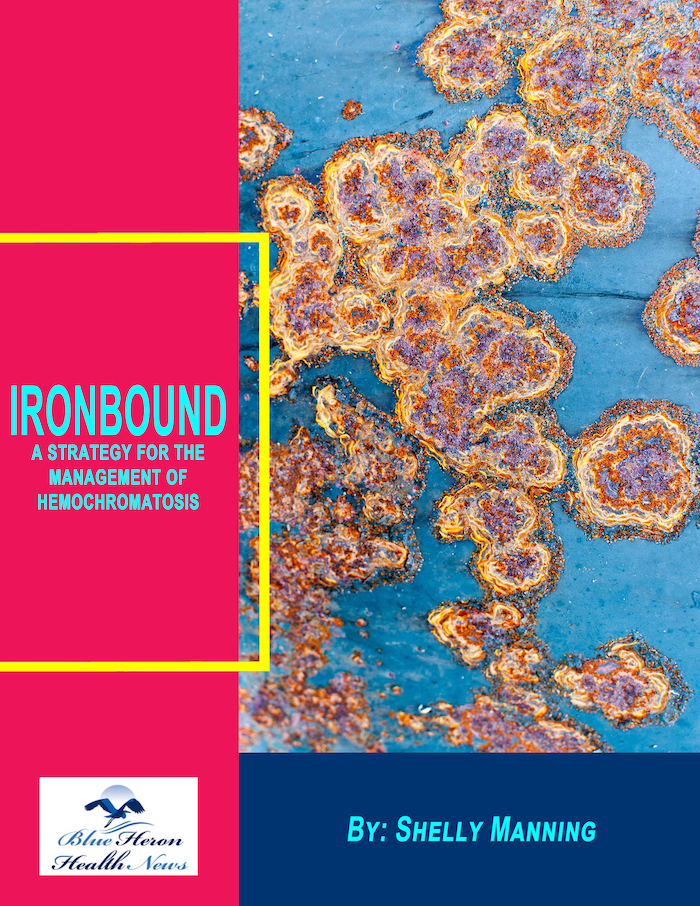
Ironbound™ A Strategy For The Management Of Hemochromatosis By Shelly Manning The 5 superfoods explained by Shelly Manning in this eBook play an important role in reducing the levels of HCT. The absorption of the excessive amount of iron by the genes of HCT can be blocked by these superfoods. In this way, the information provided in this eBook can help in resolving the problem of excess iron in your body naturally without any risk of side effects.
How does hemochromatosis affect the joints?
Impact of Hemochromatosis on the Joints
Hemochromatosis, a condition characterized by excessive iron accumulation in various organs, can also affect the joints. This iron overload can lead to a specific type of arthritis known as hemochromatosis-related arthropathy. Understanding how hemochromatosis affects the joints is crucial for managing symptoms and preventing further complications. Here is a detailed overview of the impact of hemochromatosis on the joints, including pathophysiology, clinical manifestations, diagnosis, and management.
Pathophysiology of Joint Damage in Hemochromatosis
1. Iron Deposition in Joint Tissues
- Mechanism: In hereditary hemochromatosis, mutations in genes (most commonly the HFE gene) lead to increased intestinal iron absorption and subsequent iron overload. Excess iron is deposited in various tissues, including the synovium (lining of the joints) and cartilage.
- Oxidative Stress: Iron generates reactive oxygen species (ROS), causing oxidative damage to joint tissues. This oxidative stress leads to inflammation and degradation of cartilage.
- Crystal Deposition: Iron overload can also promote the formation of calcium pyrophosphate dihydrate (CPPD) crystals in the joints, contributing to further inflammation and damage.
2. Joint Degeneration
- Cartilage Damage: Chronic oxidative stress and inflammation result in the breakdown of cartilage, the smooth tissue that cushions joints.
- Synovitis: Inflammation of the synovium (synovitis) leads to joint pain, swelling, and stiffness.
Clinical Manifestations
1. Hemochromatosis-Related Arthropathy
- Affected Joints: The most commonly affected joints are the second and third metacarpophalangeal (MCP) joints (knuckles). Other frequently affected joints include the knees, hips, shoulders, and wrists.
- Symptoms: Joint pain, stiffness, swelling, and reduced range of motion. The symptoms can be similar to those of osteoarthritis but tend to affect atypical joints (like the MCP joints).
2. Pseudogout (Calcium Pyrophosphate Deposition Disease)
- Mechanism: Iron overload can lead to the formation of CPPD crystals in the joints.
- Symptoms: Acute episodes of joint pain, swelling, and redness, resembling gout. The knees and wrists are commonly affected.
Diagnosis
1. Clinical Evaluation
- History and Physical Examination: Assess symptoms such as joint pain, stiffness, swelling, and reduced range of motion. Look for signs of joint deformity and inflammation.
- Family History: A family history of hemochromatosis can support the diagnosis.
2. Laboratory Tests
- Serum Ferritin and Transferrin Saturation: Elevated levels indicate increased iron stores and overload.
- Liver Function Tests: To assess liver involvement, as liver disease can coexist with joint complications in hemochromatosis.
3. Genetic Testing
- HFE Gene Testing: Identifies mutations such as C282Y and H63D associated with hereditary hemochromatosis.
4. Imaging Studies
- X-rays: Can reveal joint space narrowing, subchondral cysts, chondrocalcinosis (calcification of cartilage), and osteophytes (bone spurs).
- MRI: Provides detailed images of joint structures and can detect early changes in cartilage and synovium.
- Ultrasound: Can detect joint effusions (fluid accumulation) and crystal deposits.
5. Synovial Fluid Analysis
- Crystal Identification: Analysis of synovial fluid can identify CPPD crystals, confirming the diagnosis of pseudogout.
Management
1. Phlebotomy
- Mechanism: Regular blood removal to reduce iron levels. Each session removes about 500 ml of blood, containing approximately 250 mg of iron.
- Frequency: Initially weekly or biweekly until iron levels normalize, followed by maintenance phlebotomies every few months.
- Effectiveness: Reduces iron overload and can alleviate symptoms, although joint damage may not be reversible.
2. Iron Chelation Therapy
- Use: For patients who cannot tolerate phlebotomy or have severe iron overload.
- Medications: Deferoxamine, deferasirox, and deferiprone, which bind to excess iron and facilitate its excretion.
- Effectiveness: Helps reduce iron levels and prevent further joint damage.
3. Symptomatic Treatment for Arthropathy
- Nonsteroidal Anti-Inflammatory Drugs (NSAIDs): Help reduce pain and inflammation in the joints.
- Corticosteroids: Can be used for short-term relief of acute joint inflammation, either orally or as intra-articular injections.
- Analgesics: Over-the-counter pain relievers, such as acetaminophen, can help manage pain.
4. Management of Pseudogout
- Colchicine: Can be used to prevent and treat acute attacks of pseudogout.
- NSAIDs: Effective for reducing pain and inflammation during acute episodes.
- Corticosteroids: Intra-articular injections can provide relief during severe attacks.
5. Physical Therapy
- Exercise: Regular, low-impact exercises can help maintain joint function and mobility.
- Stretching: Helps improve flexibility and reduce stiffness.
- Strength Training: Strengthening the muscles around the joints can provide better support and reduce pain.
6. Lifestyle Modifications
- Diet: Avoid iron-rich foods and vitamin C supplements, as vitamin C enhances iron absorption. Limit alcohol intake to reduce the risk of liver damage.
- Weight Management: Maintaining a healthy weight can reduce stress on weight-bearing joints and alleviate symptoms.
7. Joint Protection Strategies
- Assistive Devices: Using canes, braces, or other assistive devices can help reduce stress on affected joints.
- Ergonomic Adjustments: Modifying daily activities and workspaces to reduce joint strain.
Conclusion
Hemochromatosis can significantly impact the joints, leading to hemochromatosis-related arthropathy and pseudogout due to iron overload and subsequent oxidative stress and inflammation. Early diagnosis and effective management, including phlebotomy, iron chelation therapy, symptomatic treatment, physical therapy, and lifestyle modifications, are crucial to prevent or mitigate joint damage. Regular monitoring and tailored treatment strategies can help manage symptoms, improve joint function, and enhance the quality of life for individuals with hemochromatosis.
Ironbound™ A Strategy For The Management Of Hemochromatosis By Shelly Manning The 5 superfoods explained by Shelly Manning in this eBook play an important role in reducing the levels of HCT. The absorption of the excessive amount of iron by the genes of HCT can be blocked by these superfoods. In this way, the information provided in this eBook can help in resolving the problem of excess iron in your body naturally without any risk of side effects.
